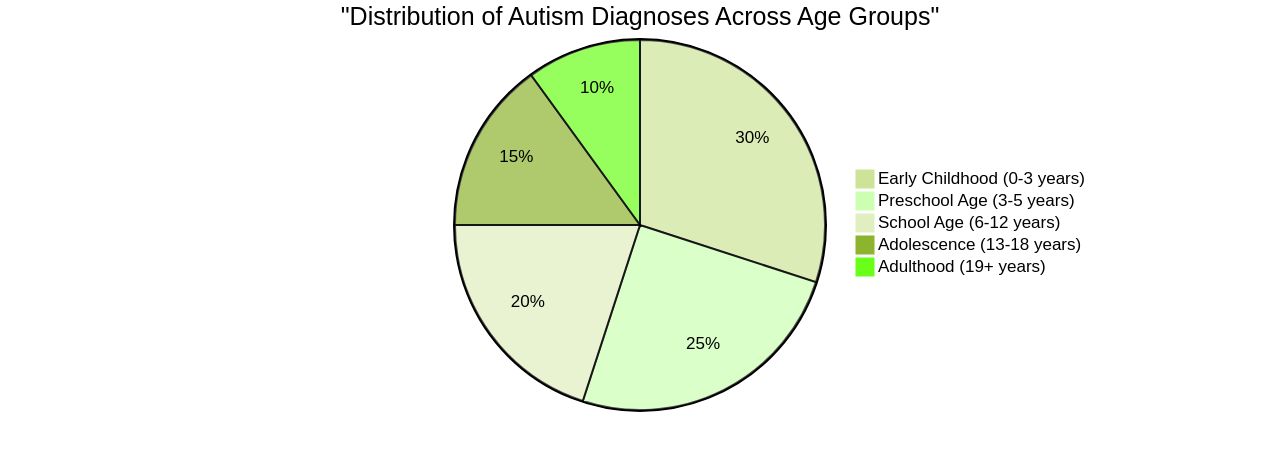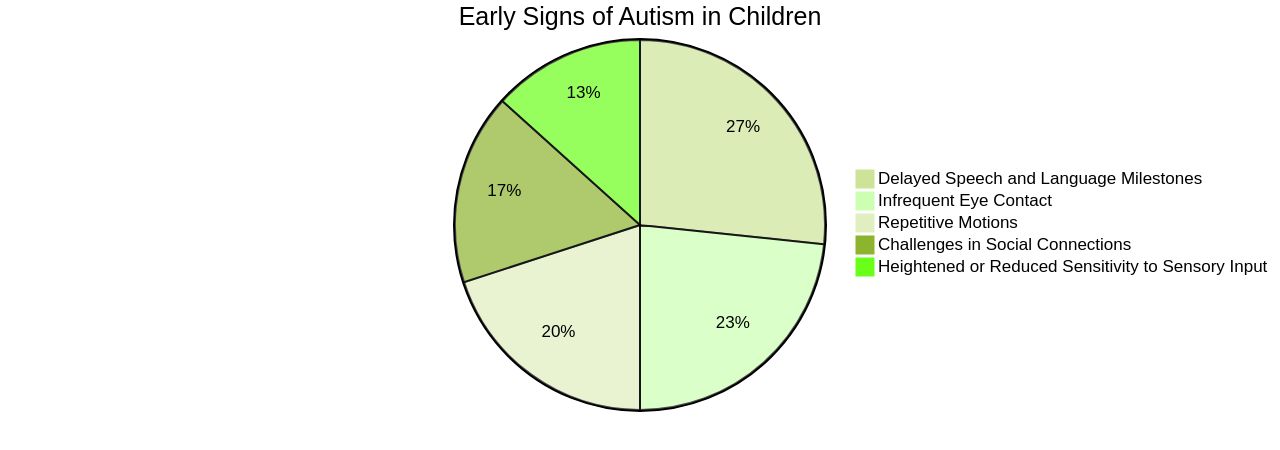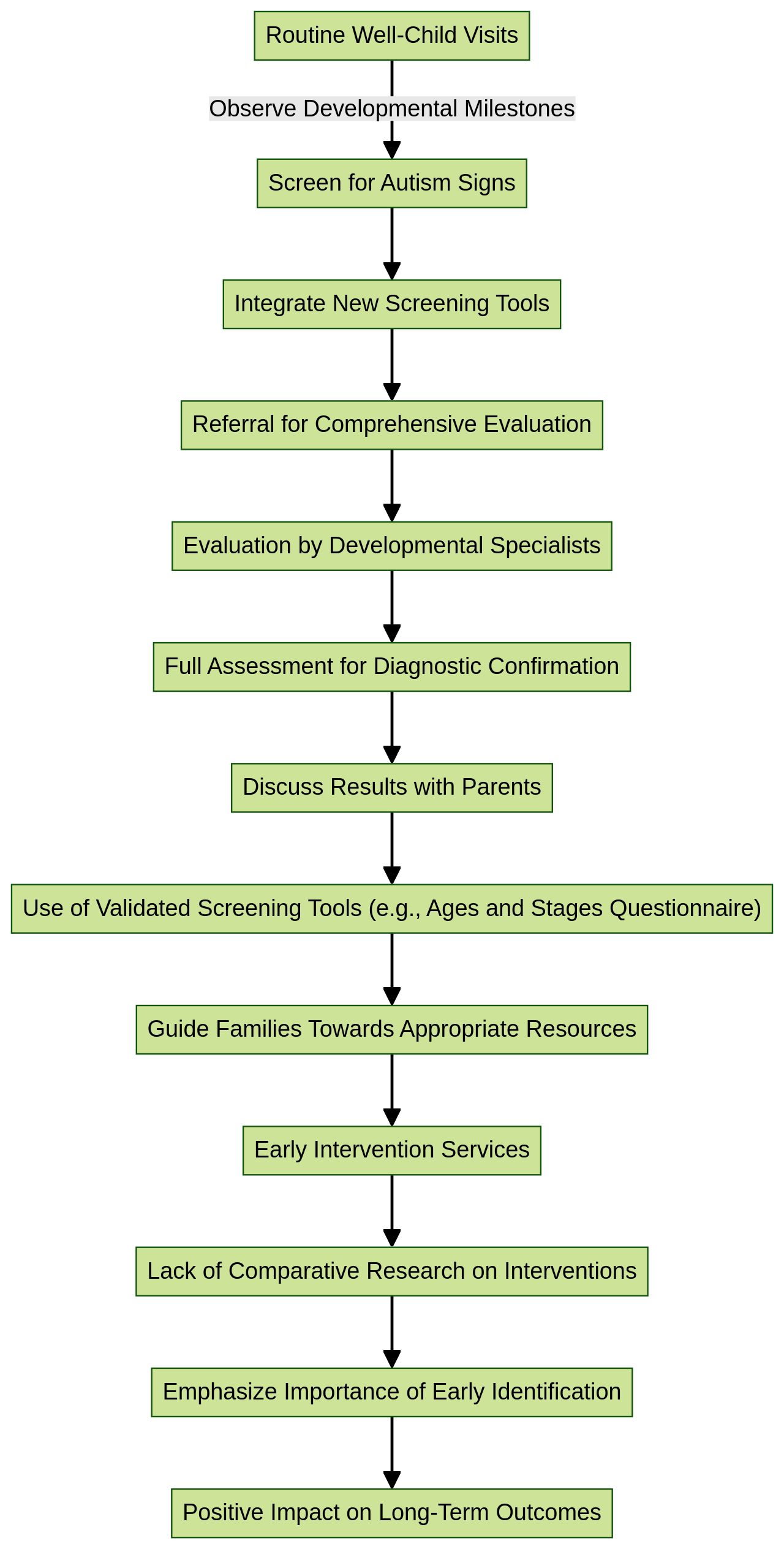Introduction
Autism Spectrum Disorder (ASD) is a condition that can profoundly impact a child's life, influencing their social skills, communication, and behavior. Detecting ASD early is vital as it opens the door to interventions that can significantly enhance a child's development. In this article, we will explore the importance of early testing for autism and the benefits of early diagnosis.
We will also discuss how to identify red flags and the role of pediatricians and healthcare providers in the diagnostic process. Additionally, we will delve into the significance of diagnostic evaluation and genetic testing in understanding autism and planning interventions. Join us as we empower parents and caregivers with the knowledge and resources to support their children on the autism spectrum.
The Importance of Early Testing for Autism
Autism Spectrum Disorder (ASD) is a condition that can profoundly impact a child's life, influencing their social skills, communication, and behavior. Detecting ASD early is vital as it opens the door to interventions that can significantly enhance a child's development.
Studies highlight the potential for identifying autism as early as 18 months, especially in children at high genetic risk. For instance, the use of the CHAT (Checklist for Autism in Toddlers) has enabled health professionals to screen toddlers and identify behavioral markers for autism, leading to earlier diagnosis and intervention.
In one study, the majority of children who passed key behavioral markers at 18 months continued normal development, while those who showed multiple markers of concern were later diagnosed with ASD. Furthermore, research from UC San Diego School of Medicine reveals that metabolic changes can precede the clinical presentation of ASD, suggesting new avenues for early detection.
Understanding these early signs is crucial. With autism affecting 1 in 36 children, the need for accessible and reliable early testing is more pressing than ever. Technological advancements, such as automated devices tracking children's eye movements while they watch videos, are paving the way for earlier and more accurate diagnoses. These innovations could reduce the wait times for diagnosis, which traditionally could extend until a child is four or five years old. By recognizing the importance of early testing, parents and healthcare providers can ensure that children with autism receive the support they need during a critical period of their development, potentially altering their life trajectory towards more independent living as adults.
Benefits of Early Diagnosis
Discovering a child's autism diagnosis early can pave the way for transformative outcomes. A groundbreaking study involving 300 autistic adults revealed the profound impact of the age at diagnosis on an individual's quality of life. The research, delving into socio-demographic backgrounds and quality of life measures, underscores the importance of early detection and intervention.
Early intervention therapies, such as Applied Behavior Analysis (ABA), speech, and occupational therapy, are tailored to augment the social, communicative, and adaptive abilities of children with autism, nurturing their autonomy from a tender age. With most autism programs targeting preschool-aged children, the emphasis on early intervention—particularly from birth to age three—is crucial. Yet, despite the consensus on treatment's key facets, such as intensity and family participation, there's a scarcity of comparative research on the myriad of autism intervention philosophies.
This gap highlights the need for accessible, well-known programs and underscores the urgency of empirical research to optimize early intervention strategies. Furthermore, recent statistics draw attention to the disparities in autism diagnosis rates, suggesting that a significant number of autistic individuals remain undiagnosed well into adulthood, particularly among women and the over 50s. This revelation calls for persistent efforts in raising awareness and improving diagnostic processes to ensure timely support for those on the autism spectrum.

Identifying Red Flags
The journey to understanding autism in a child often begins with recognizing early signs, which can be subtle and easy to miss. These signs include delayed milestones in speech and language, infrequent eye contact, repetitive motions, challenges in forming social connections, and heightened or reduced sensitivity to sensory input.
While these indicators can raise concerns, they are just the beginning of a complex diagnostic process that delves into the intricate genetic and environmental factors contributing to autism spectrum disorder (ASD). Current research, including brain imaging studies, suggests that ASD is linked to distinct structural and metabolic changes in the brain.
These findings underscore the genetic underpinnings of autism, dispelling myths that vaccines, parenting styles, or dietary choices are to blame. Instead, scientists are investigating genetic irregularities and the possibility of inherited susceptibility to autism, with the hope of identifying specific triggers.
Early detection is pivotal. Studies have shown that early intervention can significantly alter the life course for children with ASD.
For example, children diagnosed with autism by age 4 are fifty times more likely to benefit from early services. However, disparities exist in diagnosis rates, with boys approximately four times more likely to be diagnosed than girls, and White and Black children more frequently identified than Hispanic children. These discrepancies highlight the need for increased awareness and access to diagnostic services across all communities. The importance of early diagnosis is further emphasized by research revealing that the majority of children who exhibit typical development at 18 months continue on a normal trajectory. In contrast, those showing several key behavioral signs, such as lack of joint attention or social play, may later be diagnosed with autism. As our understanding of autism's developmental biology advances, it becomes increasingly clear that a collaborative effort between healthcare providers and families is essential for the early identification and support of children with ASD.

The Role of Pediatricians and Healthcare Providers
During routine well-child visits, pediatricians are uniquely positioned to observe a child's developmental milestones and screen for early signs of autism, a neurodevelopmental disorder characterized by a spectrum of symptoms. As research advances, new screening tools are being integrated into these checkups, enabling the detection of autism signs in children as young as 12-14 months. When concerns arise, either through observations by healthcare providers or parental input, a referral for a comprehensive evaluation by developmental specialists can be initiated.
These evaluations delve beyond initial screenings to confirm diagnoses and determine the need for early intervention services. It's pivotal to note that while screening tools are invaluable, they are not diagnostic. A positive result on a screening test warrants a full assessment by a trained professional to ascertain if treatment or early developmental intervention services are required.
The American Academy of Pediatrics advocates for developmental and behavioral screening for all children at specific ages, even in the absence of visible concerns. Validated screening tools, such as the Ages and Stages Questionnaire, enable systematic discussions about a child's development between parents and healthcare professionals. Moreover, there's a consensus on the importance of early intervention's intensity, family involvement, and focus on generalization.
Despite the variety of programs available for children with autism, particularly in the preschool age group, there is a lack of comparative research on these interventions. This underscores the necessity for healthcare providers to stay informed about the available programs and to guide families toward the appropriate resources for their children. As pointed out by experts, early identification and intervention can lead to more favorable long-term outcomes due to the heightened plasticity of younger children's brains.

Diagnostic Evaluation and Genetic Testing
To diagnose autism effectively, a multidisciplinary team of professionals, including but not limited to psychologists, speech-language pathologists, and occupational therapists, conduct a thorough evaluation, often considering genetic factors. Genetic testing has become a crucial part of this process, not only to uncover potential underlying genetic contributors to autism but also to alleviate parental self-blame and guilt. Research, such as the SPARK study, reveals that parents experience a positive psychological impact when a genetic diagnosis is made for their child, with this effect remaining stable over time.
Moreover, genetic testing informs life planning and intervention strategies, with a modest influence on parental actions. Recent advances, like those from Dr. Daniel Geschwind's research, have identified seven genes that may increase autism risk, marking a significant step forward in understanding the genetic intricacies of autism. Such findings are pivotal as they stem from studies that consider rare inherited variations, offering insights that could revolutionize the approach to autism diagnosis and treatment.
While no medical tests can confirm autism, clinicians utilize the DSM-5 criteria, which emphasize the need for symptoms to be present in early childhood. The complexity of autism's genetic basis is underscored by the absence of a single causative gene, instead suggesting a pattern of hereditary predisposition. As research continues to uncover the genetic landscape of autism, organizations like The Autism Community in Action and NeuroQure are working tirelessly to shorten the diagnostic journey, recognizing the profound impact early intervention can have on a child's development.
Conclusion
In conclusion, early testing for Autism Spectrum Disorder (ASD) is vital in enhancing a child's development. Detecting ASD early allows for timely interventions that shape a child's life trajectory towards more independent living.
Screening tools and technological advancements enable earlier and more accurate diagnoses. Early diagnosis offers transformative outcomes for children with autism, nurturing their social, communicative, and adaptive abilities from a young age.
However, accessible programs and empirical research are needed to optimize early intervention strategies and increase awareness and access to diagnostic services. Recognizing early signs of autism is crucial, such as delayed milestones in speech and language or challenges in forming social connections.
Understanding the genetic underpinnings of autism highlights the importance of early detection and intervention. Pediatricians play a crucial role in observing developmental milestones and screening for early signs of autism during routine well-child visits.
Healthcare providers must stay informed about available programs and guide families towards appropriate resources. Diagnostic evaluation involves a multidisciplinary approach considering genetic factors. Genetic testing uncovers potential contributors to autism, providing support to parents. Recent advances offer insights that could revolutionize diagnosis and treatment approaches. In conclusion, recognizing the importance of early testing and diagnosis empowers parents and healthcare providers to ensure timely support for children on the autism spectrum. This collaborative effort enables families to navigate challenges and promote the well-being of their children.




